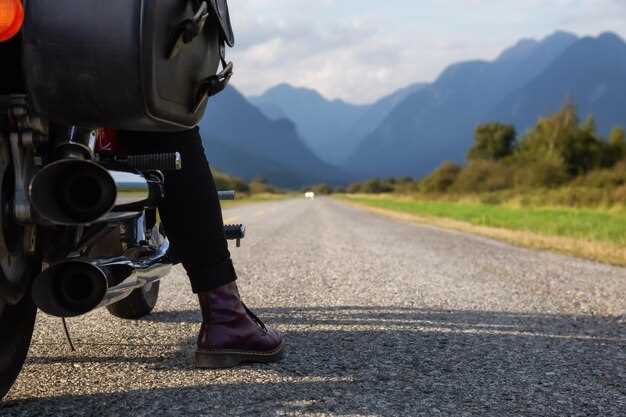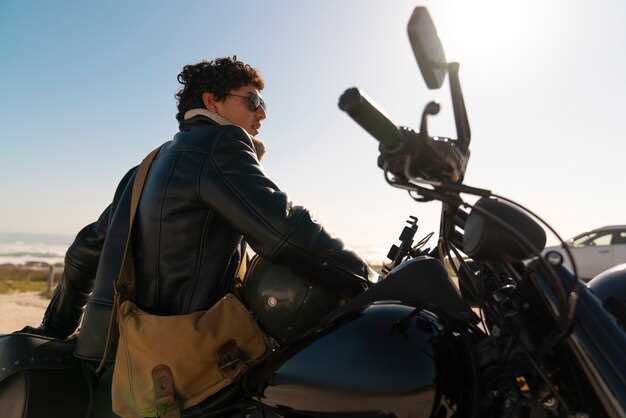
Safety is paramount when it comes to sharing the road with motorcycles. As more riders take to the streets, it becomes essential for all road users to understand the dynamics of motorcycle operation and the unique challenges faced by motorcyclists. Unlike larger vehicles, motorcycles are smaller and can be more difficult to see, which heightens the risk of accidents. By adopting safe sharing practices, both drivers and motorcyclists can contribute to a safer road environment.
Effective sharing of the road necessitates heightened awareness and mutual respect among all users. Motorcyclists often maneuver through traffic differently than cars, needing space and consideration to navigate safely. Understanding these differences is crucial. For instance, maintaining a safe following distance and being vigilant when changing lanes can significantly reduce the chances of collisions. Educating oneself about the behaviors and visibility needs of motorcycles will foster a more harmonious coexistence on the roads.
By implementing specific strategies for safe road sharing, we can create an environment where both motorcyclists and drivers feel secure. Simple actions, such as using turn signals, checking blind spots, and giving motorcyclists ample space when passing, can greatly enhance safety. These measures are not just beneficial for motorcyclists; they improve overall traffic flow and prevent accidents, allowing everyone to enjoy the ride–whether on two wheels or four.
Identifying Blind Spots: Improving Visibility for All Road Users

Blind spots are areas around vehicles that are not visible to the driver through standard mirrors. For motorcyclists, these areas can pose significant risks, as their smaller size makes them容易 to overlook. Understanding and identifying these blind spots is essential for enhancing safety on the road for everyone.
For cars, blind spots are typically located on the sides and at the rear, where drivers may have limited visibility due to vehicle design. Motorcyclists, on the other hand, often ride within these blind zones, making it crucial for car drivers to frequently check mirrors and look over their shoulders before changing lanes or making turns. This proactive approach can significantly reduce the chances of collisions.
Riders can also take steps to improve their visibility. Wearing bright, reflective gear increases the chances of being seen by other road users. Additionally, positioning oneself strategically in traffic can help motorcyclists avoid being hidden in blind spots. Staying aware and maintaining a safe distance from other vehicles enhances safety and visibility.
Ultimately, the responsibility of road safety lies with all users. By being more aware of blind spots and taking measures to mitigate their effects, both motorcyclists and drivers can contribute to a safer road environment. Working together fosters a culture of respect and vigilance on the road, ensuring a safer experience for everyone.
Adjusting Driving Behavior: Maintaining Safe Distances and Speeds

Sharing the road with motorcycles requires a heightened awareness of one’s driving behavior. One of the key aspects of ensuring safety is maintaining appropriate distances and speeds when interacting with motorcycles. Motorcycles are smaller, more agile, and can accelerate or decelerate more quickly than larger vehicles, affecting the dynamics of road sharing.
It is essential to establish a safe following distance behind motorcycles. A general rule is to maintain at least a three to four-second gap. This distance allows for adequate reaction time in case the motorcycle suddenly slows down or stops. Drivers should keep in mind that road conditions, such as wet or uneven surfaces, may require even more distance.
When approaching motorcycles, adjusting speed is crucial. Reducing speed when nearing a motorcycle provides its rider with a greater margin for safety. Sudden stops or aggressive acceleration could lead to dangerous situations. Therefore, being aware of one’s speed and adapting it according to the presence of a motorcycle can significantly reduce the risk of accidents.
Moreover, be mindful of blind spots. Motorcycles can easily be obscured in traditional car blind spots, increasing the chances of collisions. Regular checking of mirrors and maintaining a safe distance can help ensure that both parties can navigate the road safely.
In summary, adjusting driving behavior by maintaining safe distances and speeds is vital when sharing the road with motorcycles. By being vigilant and respectful of their presence, drivers contribute to a safer roadway for everyone.
Recognizing Motorcycle Signals: Understanding Rider Intentions on the Road
Motorcyclists often use various signals to communicate their intentions to other road users. Understanding these signals is crucial for safety on the road. Riders rely on body language and signaling devices to indicate their next moves, making it essential for drivers to recognize and respect these cues.
One of the most common indicators is the motorcycle’s turn signal. Motorcyclists activate their signals when planning to turn or change lanes. However, it’s important to note that they may also be preparing to stop or slow down, particularly when navigating tricky conditions. Therefore, observing the behavior of the motorcycle can provide valuable insights into their intended actions.
Another significant signal is the positioning of the motorcycle on the road. If a rider moves towards the left or right edge of their lane, it often indicates a forthcoming maneuver. Riders will shift their body weight and lean into turns, clearly signaling their direction. Recognizing these physical cues can enhance your understanding of the rider’s intentions.
It’s also essential to be aware of the fact that motorcycles may utilize their headlights to signal their presence. Many riders use high beams during the day to increase visibility. This practice is an effort to enhance safety, helping other vehicles notice them more readily on the road.
Moreover, some motorcyclists might use hand signals for clearer communication. Simple gestures, such as an outstretched arm for a left turn or an upward hand for a right turn, provide additional context to fellow road users. Being familiar with these movements can prevent potential accidents and ensure a safer driving environment.
In conclusion, recognizing motorcycle signals is crucial for ensuring safety on the road. By understanding rider intentions through turn signals, positioning, and hand gestures, other road users can respond appropriately. This awareness fosters a cooperative atmosphere where both motorcyclists and drivers can coexist, minimizing risks and enhancing overall road safety.